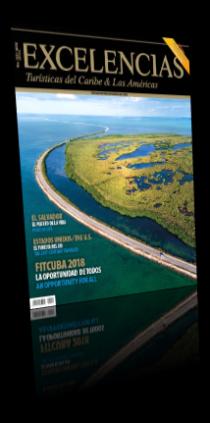- Eating in Central Cuba
One of the highlights of Cuba’s culinary heritage is no doubt its well-defined homogeneity in the use of products, cooking ways and consumption habits, all of this hallmarked by a clientele that looks quite uniform all across the country. However, this bunch of convergences is obviously made up of several dovetailing elements, and each and every one of them is generally distinguished by its respective distinctions. That happens in most of today’s 16 provinces the island nation is divided into: quite a lot from the mountainous and agricultural elements of inland Cuba, things stemming from the cities and towns, a tad from the coastal and maritime areas. The latter is geographically conditioned by the fact that the island nation’s coasts are bathed by the balmy waters of the Caribbean Sea.
Therefore, the Villa Clara gastronomy reveals itself with a number of regional contributions that come together as a diverse batch of food genres, tastes and traditions that are never at odds with the imperatives of modernity. It’s important to point out that this region of central Cuba is –it goes without saying- in the middle of the island nation. Placetas is the first town on the list, founded back in 1814 in the hamlet of San Atanasio de Guaracabuya, simply known as Guaracabuya.
An old saying goes “get a good name and forget about the rest”. But without precisely getting down to rest on those well-deserved laurels, certain locations like Santa Clara, Remedios, Caibarién, Sagua la Grande and Isabela de Sagua refuse to get bogged down in their historic and luring positioning. The heritage of its cobblestones –referring to the streets and buildings of majestic architecture- a number of natural sites, traditions, customs and oral values are constantly preserved and renewed. And with so much to wallow in, there’s an impending need to count on a gastronomy that could be up to par with that of the rest of the country and is good enough to get some moxie back, both physically and spiritually, in terms of living a genuine and knowledgeable experience.
PLACES IMPOSSIBLE TO REMOVE
Driving down the road is the best way to feast eyes on –and compare- countryside hills, towns and peoples. It could be worth trying to get things going with a closer look at the rural and city lifestyles of central Cuba, by the hand of its cooking, with those traditions that are simply impossible to remove, not even with the pushing and shoving of today’s ever-changing reality:
Cornmeal and crab meat
This particular recipe came into being back in 1875 in the region of Hato Ceja de Pablo, allegedly authored by a slave who belonged to Don Francisco Elguea, who eventually used stone crab for this preparation. However, as the recipe caught on in the 1930s thanks to a fisherman from Corralillo named Juan Guerra, red crabs were used instead in an effort to make it taste even better.
Ingredients:
» Spiced crab meat: 150 g
» Dry cornmeal: 330 g
» Salt
» Tomato paste: 100 g
» Vegetal oil: 60 mL
» Garlic: 6 or 8 big cloves
» Big onion: 1
» Cumin
» Chili pepper: 4 or 5
» White pepper
» Bay leaf: 1
» Oregano
Preparation:
Parboil two big red crabs. Remove the legs and the claws, and get the lean meat out. Sauté them in vegetable oil or lard, together with the onion, the garlic and the pepper that had all been previously sliced. Add the tomato paste, the cumin, the oregano, the bay leaf and the white pepper. In the process, you can add part of the crab’s fat to pop up the flavor a little bit more. Cook it all until you get an enchilada. Rinse the cornmeal and cook it in a different pot for approximately one hour until it begins to bubble. Stir every so often to prevent the mix from getting gluey and sticky. Add the enchilada once it well cooked, firstly to prevent it from getting undone and secondly to avoid the scents and tastes from volatizing. Add a pinch of salt and finish cooking the entire mix. Serve hot in a deep dish and garnish with paprika. It provides a couple of midsize helpings.
Okra with meat and ripe plantain balls (a 19th-century recipe)
Ingredients:
» Lean pork meat: 1 kg
» Big ripe plantains: 2
» Fresh and tender okra: 800 g
» Garlic: 8 or 10 cloves
» Big onion: 1
» Salt
» Ground pepper
» The juice of two lemons
Preparation:
Cut off the okra in crosswise slices, rinse them in water and add the lemon juice. If necessary and in order to remove the okra’s slimy mucilage, boil in clean water with the lemon juice or simply pour a little bit of white vinegar. Rinse again, shake them dry and put aside. Cut the unpeeled plantains in pieces and cook them in boiling water until they soften. Get them out of the water and peel them, then mash them and roll them into small balls (consider sprinkling some flour on your hands to make the plantain balls) and then fry them in boiling oil. Sauté the onion slices and the thinly-cubed garlic (you should first sauté the onion and let it cook till it gets slightly purplish, then add the garlic). Then add the pork meat sliced in midsize cubes and sautéed in salt and pepper until it gets tender. Mix it all (the okra and the plantain balls). You can add a tablespoon of tomato paste and sprinkle some dry wine in it. Add a pinch of salt.



























































































































